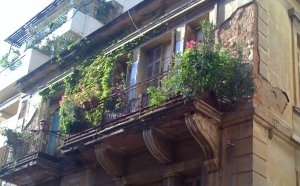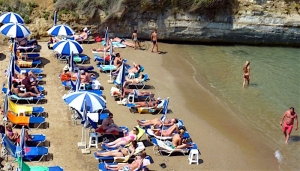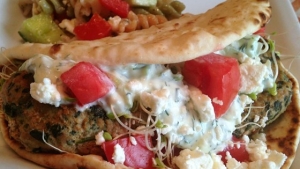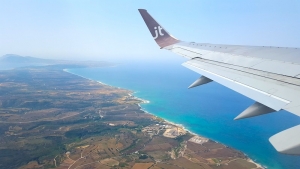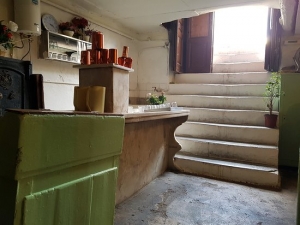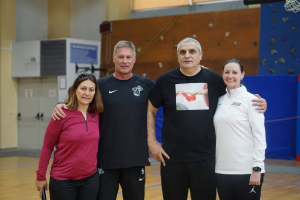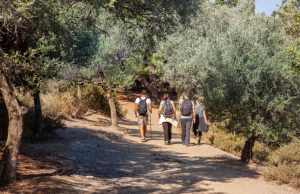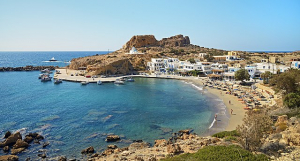Want to take a breather from the city beat and surround yourself with nature? You’d be surprised how many fantastic hiking options there are just outside of Athens. Rejuvenating alpine paths. Lush forest trails with byzantine delights hiding in plain sight. Intrepid treks near famed ancient ruins. All within an hour of the Acropolis.
All five of these recommended routes are great any time of year, although spring and autumn offer the most comfortable temperatures. In winter, especially in the mountains, be prepared for cold and even snow. If hiking in summer, avoid the hottest part of the day (about 12.00 – 15.00) and take plenty of water and sun protection. Steer clear of particularly hot, breezeless days, and keep in mind that summer storms can suddenly roll in (especially in June).
1. Mount Ymittos (Kaisariani Monastery)
Best for: Hikers, mountain runners, anyone interested in Byzantine sights.
The Route: Even longtime residents of Athens are often surprised to discover this emerald forest literally on their doorstep. Rising up from the neighborhood of Kaisariani towards the steep slope of Mt Ymittos, this network of walking paths and forest roads is only a 15-20 minute drive from the city center, and is home to one of Athens' most historic monasteries, Christian sites, and ruins.
Why: Walking through the dense pine forest, you truly feel you are leaving the metropolis behind. There are also great picnic spots around the monastery.
How long: Allow about 2 hours to see the main sights and walk the prettiest paths.
Look out for: Behind Kaisiarani Monastery you'll find the curious, cavelike Analipseos Church with a pond inhabited by koi and frogs. Just behind that runs the Botanical Walk. Follow it north to a site called Kalopoula (also accessible by car) for a charming refreshment stand in the woods with a cold beer and cooked dishes. Be advised that it closes early, well before sunset.
Top tip: For one of the best views of the entire city of Athens, head to Taxiarches Hill (near Kaisariani Monastery).
How to get there: There are no nearby metro stops so the easiest way is to get a taxi directly to Kaisariani Monastery.
2. Alsos Syngrou
Best for: Runners, families.
The Route: About a 20-minute drive north of the city-centre lies a vast 230-acre green space known as Alsos Syngrou. “Alsos” in Greek means “urban forest”; while Andreas Syngrou was a wealthy banker and important 19th-century figure who bequeathed this entire expanse to, what is today, the Institute of Agronomic Sciences. About 50 acres are cultivated with crops such as grapevines, pistachio, and almond trees. The rest is mostly a wild expanse of pines and shrubs, scored with broad paths. You'll also find a dirt football pitch, basketball court and running track, and some grand buildings of the former Syngrou estate.
Why: When you’re in the heart of Alsos Syngrou, it feels quite wild—even though you’re still relatively close to the city. It's not as manicured as it could be, but it’s a lovely spot nonetheless for a nature fix without leaving town.
How long: A full circuit of the park will take between 1-2 hours, but there are various entrances, so you can tailor your visit to your energy levels.
Look out for: At the northeastern corner, among the ornate buildings of the estate, you’ll spy a small church designed by renowned architect Ernst Ziller. It’s Greece’s only gothic Orthodox church and looks like it's made out of fondant.
Top tip: There are no refreshment kiosks but it’s just a few stops on Line 1 of the Athens Metro to the upmarket cafes and food court of the Golden Hall shopping mall or the chic suburb of Kifissia.
How to get there: Take Line 1 of the Athens Metro to the station KAT.
3. Tatoi Royal Estate
Best for: Hikers, history buffs, royal enthusiasts.
The Route: To the northeast of Athens, in the foothills of Mt. Parnitha, is Tatoi Palace, where Greece's royal family once decamped during summer to flee the city heat. The palace itself has been shuttered for years, and the buildings are in a neglected state. But one can walk around the grounds and along the forested paths of the wider area.
Why: The royals and aristocracy who summered here were no fools. It’s decidedly cooler than downtown thanks to the elevation, flowing streams, and lush green vegetation. The well-signposted paths make it an easy choice for a nature immersion with only the sounds of the wind and wildlife for company.
How long: Walking around the main palace grounds will take about an hour, although there are plenty of forest paths in the area for longer treks.
Look out for: For a deeper sense of Tatoi’s history, seek out the royal mausoleum and cemetery.
Top tip: The wider area is known for its country-style restaurants (taverna Agios Merkourios nearby is among the best and has a lovely view).
How to get there: Tatoi is not served by public transport, so access is only via a taxi or private/rental car—a 45 min drive from the city centre.
4. Sounion National Park Best for: Adventurous souls, mineral enthusiasts, those who want to experience epic Sounio away from the tour buses.
The Route: Above the famed Temple of Poseidon, on the very tip of the Attica peninsula, stretches an expanse of forested hills that make up the Sounion National Park. The natural carpet of piney forest, shrubs, and wild herbs is lovely—but it’s geology that sets this region apart. Rich in mineral deposits, the area has been mined since antiquity—up until the 20th century, with valuable deposits processed and shipped from the nearby port of Lavrio—and remnants abound. One can hike through the national park from Lavrio on one stretch of the coast to Sounio on the other. Or drive directly to the village of Agios Konstantinos.
Why: As probably the least visited and developed national park in Attica, there’s an out-of-the-way wildness that makes a pleasant shift from the well-trodden tourist trails. Your reward will be stunning sea views over both sides of the peninsula.
How long: To hike the full distance from Lavrio to Sounio through the national park will take about 3-4 hours.
Look out for: The Chaos Gulch. This massive cavity in the earth, just outside the village of Agios Konstantinos, appears to have been created by the collapse of a huge underground cave. In Lavrio, stop by the Mineralogical Museum to learn how the area’s mineral wealth has been exploited since antiquity.
Top tip: Swimming in the sea directly underneath the Temple of Poseidon is arguably more magical than visiting the temple itself!
How to get there: KTEL intercity buses service both Lavrio and Sounio, so you can start at one end, and get a return bus from the other.
5. ParnithaBest for: Dedicated hikers, although it's also great for families who want to introduce their kids to the wilderness.
The Route: Mt Parnitha is Attica's tallest mountain (reaching 1,413m) and its most “serious”. Driving from the city, the road climbs steeply before levelling out. After a number of turns, you reach the Bafi Refuge at an elevation of 1,160m. Despite a major wildfire in 2007, forested expanses in the area around the refuge have survived and there are myriad gorgeous routes for all levels of ability here—from short, easy walks to nearby springs, to challenging hikes to the mountain's peaks.
Why: You’d expect to travel much further from Athens to experience such an authentic alpine setting, with such diversity of flora and fauna. The Bafi refuge is highly accessible and offers a range of services, including guided hikes for kids and a restaurant serving up comfort cuisine with a view from up in the clouds. Parnitha has snow during most of the cold months lending itself to winter fun. In summer, it rarely climbs above 30 degrees, even on the hottest days, making for a revitalizing getaway.
How long: You can literally hike for days here (and sleep in the Bafi refuge). At the very least you will need half a day, taking into account travel time to and from the mountain.
Look out for: The mountain has rich wildlife including birds of prey, foxes, and even wolves in its more remote corners. Many of the animals are elusive, but you are quite likely to spot the red deer that live on the mountain.
Top tip: The relative proximity of Athens can create a dangerous complacency on Parnitha, and it’s worth remembering that it is a big mountain, with all of the inherent dangers. The weather can change abruptly, even in summer, and it’s easy to get lost.
How to get there: Aside from the road that leads up to the Bafi refuge (about a 1-hour drive from Syntagma), there is also a (free) cable car operated by the Regency Casino Mont Parnes, located on the mountain. You can get to the parking lot at the bottom by car, taxi, or public bus. From the casino, the Bafi refuge is about a 45-minute hike.
This content was originally published on
This Is Athens
Photo by: Manos Chatzikonstantis
Whether you've just arrived in town – or have been here for years – Athens always has new secrets to share!
This is Athens is the official guide to this captivating city of ancient energies and booming urban culture. Compiled by a team of specialist local writers, This is Athens brings you an authentic and intimate portrait of a living Athens beyond the guidebooks – along with daily curated listings of all the best events and great weekend inspiration all-year round. From must-know neighbourhoods and emerging art hubs, to gourmet hotspots, cool shopping and the buzziest bars, This is Athens will help you to get the most out of living in Athens!


